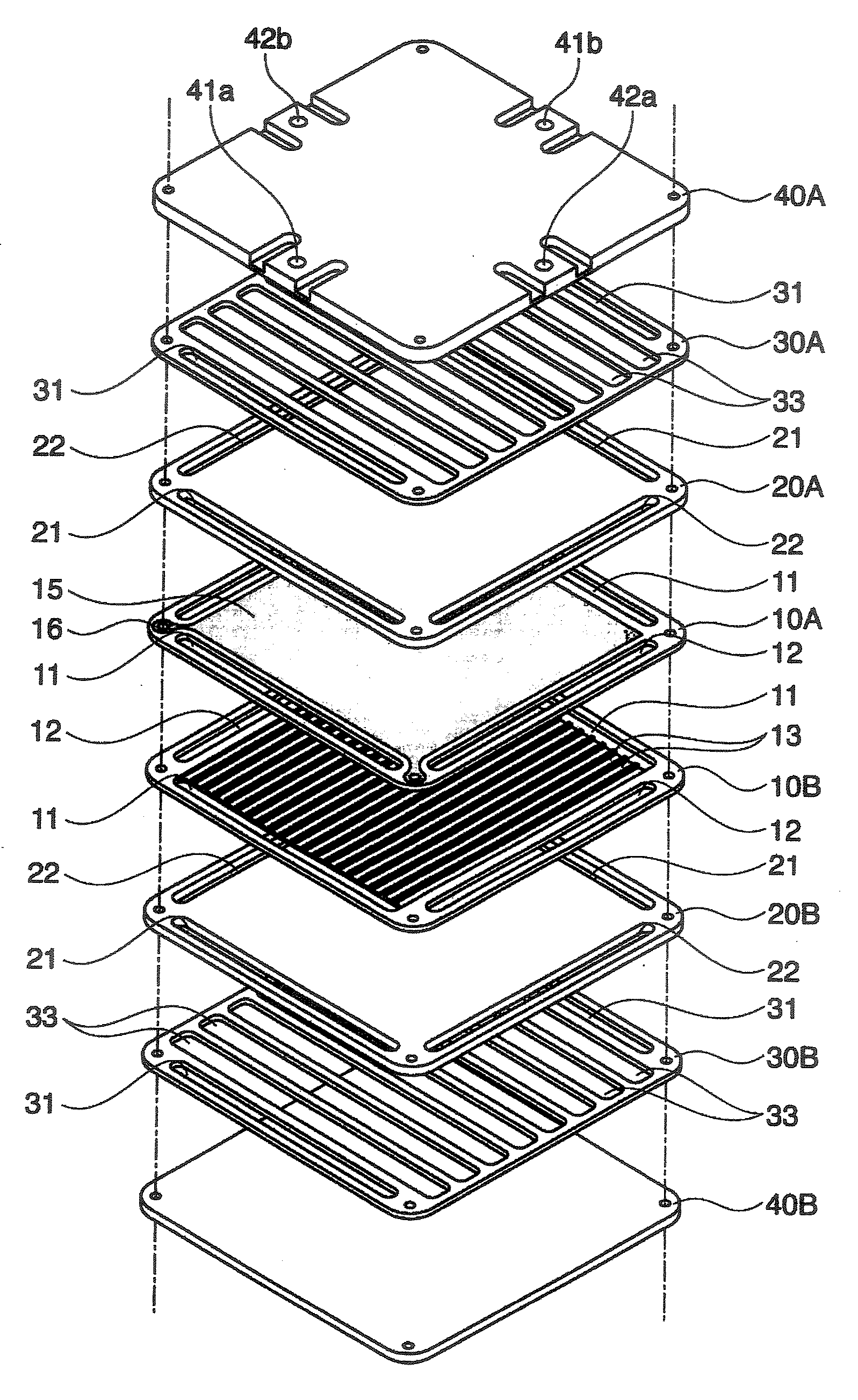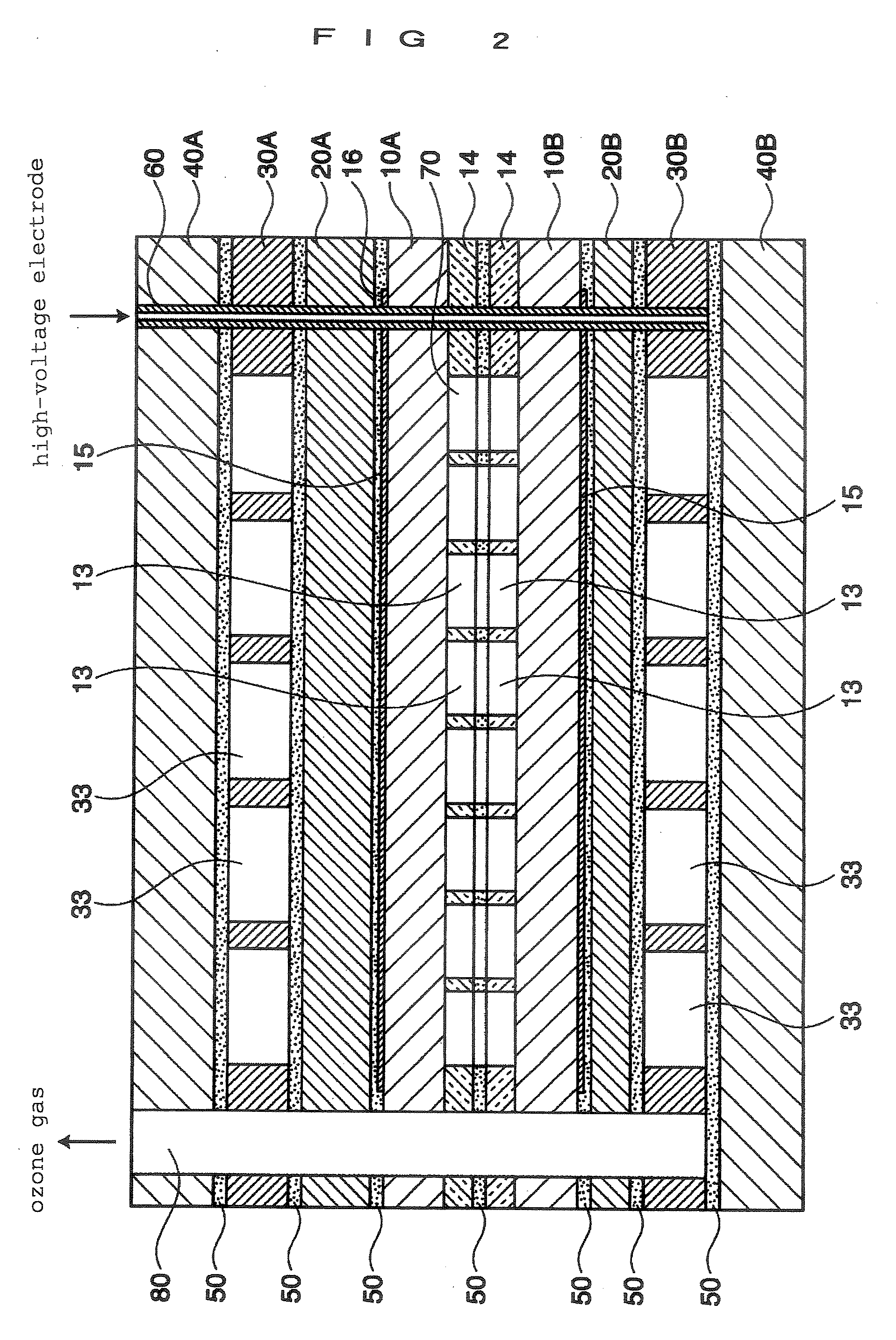Discharge cell for ozonizer
a discharge cell and ozonizer technology, applied in the field of plate-type discharge cells, can solve the problems of reducing the discharge current in the discharge gap, deteriorating the ozone generating efficiency, and increasing the manufacturing cost of the discharge cell, so as to improve the ozone generating efficiency, and reduce the thickness of the high-voltage insulating plate
- Summary
- Abstract
- Description
- Claims
- Application Information
AI Technical Summary
Benefits of technology
Problems solved by technology
Method used
Image
Examples
first embodiment
[0072] Next, the effect of the thickness of the high-voltage insulating plate in the discharge cell of the present invention on the ozone concentration is quantitatively indicated to clarify the effect of the present invention.
[0073] As a first example, the thickness of the high-voltage insulating plate 20A was variously changed in the discharge cell shown in FIGS. 1 and 2. Each thickness of the dielectric bodies 10A and 10B was set to 0.3 mm, and the total thickness was set to 0.6 mm. The gap amount in the discharge gap 70 was set to 35 μm, the thickness of the low-voltage insulating plate 20B was set to 0.3 mm, and each thickness of the slit plates 30A and 30B was set to 0.5 mm. The thickness of the high-voltage insulating plate 20A was set to 2 mm, 0.8 mm, and 0.3 mm, which was 3.3 times, 1.3 times and 0.5 times the total thickness (0.6 mm) of the dielectric bodies 10A and 10B, respectively.
[0074] The material gas was high-purity oxygen gas (6N), and a flow volume thereof was s...
second embodiment
[0082] Next, an effect of a surface roughness of the dielectric body in the discharge cell of the present invention on the ozone concentration is quantitatively indicated to clarify the effect of the present invention.
[0083] In the discharge cell shown in FIGS. 1 and 2, a roughness of the opposed surfaces of the dielectric bodies 10A and 10B was variously changed. The lapping finish was used as the mirror-like finishing to smooth the opposed surfaces, and the roughness was adjusted by changing a processing time. Without processing, the surface roughness Ra was 6.3 μm.
[0084] The dielectric bodies 10A and 10B were formed of TiO2-doped alumina, and each thickness was set to 0.3 mm. The gap amount in the discharge gap 70 was set to 70 μm, the thickness of the low-voltage insulating plate 20B was set to 0.3 mm, the thickness of the high-voltage insulating plate 20A was set to 0.8 mm, and each thickness of the slit plates 30A and 30B was set to 0.5 mm, respectively.
[0085] The material ...
PUM
 Login to View More
Login to View More Abstract
Description
Claims
Application Information
 Login to View More
Login to View More - R&D
- Intellectual Property
- Life Sciences
- Materials
- Tech Scout
- Unparalleled Data Quality
- Higher Quality Content
- 60% Fewer Hallucinations
Browse by: Latest US Patents, China's latest patents, Technical Efficacy Thesaurus, Application Domain, Technology Topic, Popular Technical Reports.
© 2025 PatSnap. All rights reserved.Legal|Privacy policy|Modern Slavery Act Transparency Statement|Sitemap|About US| Contact US: help@patsnap.com



